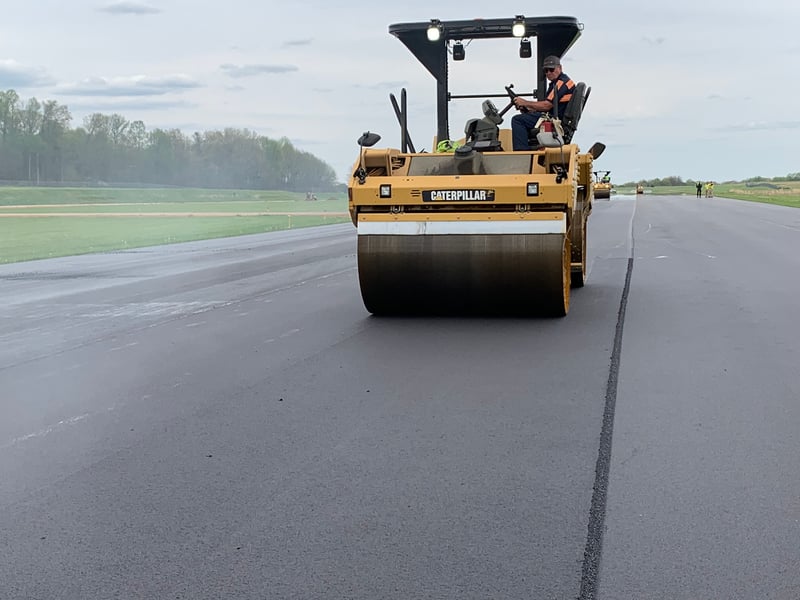At Surface Tech, our commitment to technology and innovative paving solutions underpins everything we do, so we’re embracing the newer approach to developing better performing asphalt mixes.
It’s called “balanced mix design” or BMD for short. The concept originated in Texas where it’s currently used to evaluate resistance to rutting and cracking. Other highway agencies, including Louisiana and California, have adopted some aspects of BMD, while still other state agencies have started to explore it.
In short, BMD is simply testing the end result mixture by incorporating two or more mechanical tests, such as a rutting test and a cracking test, to gauge how well an asphalt mixture will resist common types of distress. There are two main approaches to designing asphalt mixtures in the US:
1. Volumetric Design with Performance Verification
This involves a Superpave volumetric (only) mix design where samples are made and optimized based on the volume of aggregate, asphalt binder and air. If the mixture doesn’t pass volumetric limits, the mix design process repeats.
2. Performance-Modified Volumetric Mix Design
This Superpave mix design method establishes an initial aggregate blend and asphalt content based on Superpave volumetric design as mentioned above with adjustments permitted to meet performance tests. These performance tests typically check for rutting and cracking and are part of the BMD process. Final design may not meet all traditional Superpave volumetric criteria, but the mixture is designed so that the more improved crack resistant mixture will not rut; thus the term “balanced”.
The time is right for the adoption of BMD. Performance tests as part of the mix design procedure can help ensure the pavement meets its desired lifespan at a time when the US pavement infrastructure is in a decline.
Numerous performance tests have been developed over the past decades, including thermal cracking, reflection cracking, flexural fatigue cracking, rutting and moisture susceptibility tests. In order to include any of these mixture performance tests in the BMD procedure, the test result criteria must be based on the desired field performance.
It appears the move is on toward the widespread adoption of BMD, and Surface Tech applauds the advancement of any testing that holds the promise to improve asphalt mix properties. However, we also adhere to the philosophy that improvements in asphalt mix design need to be understood scientifically.
BMD applies a scientific approach to mix design by performing tests around rutting and cracking properties so that the mix is more balanced and not prone to immediate cracking (too brittle) or rutting (too soft). And as in all things in life, a balanced approach generally yields the best results.
To learn more about BMD, visit http://www.eng.auburn.edu/research/centers/ncat/newsroom/2017-spring/balanced-mix.html

